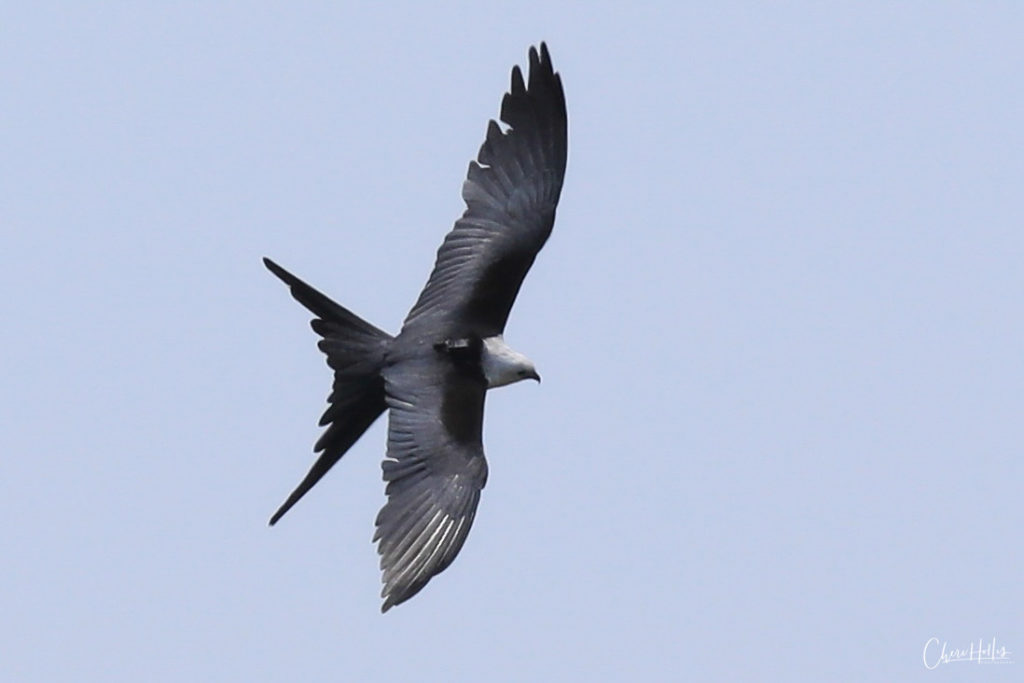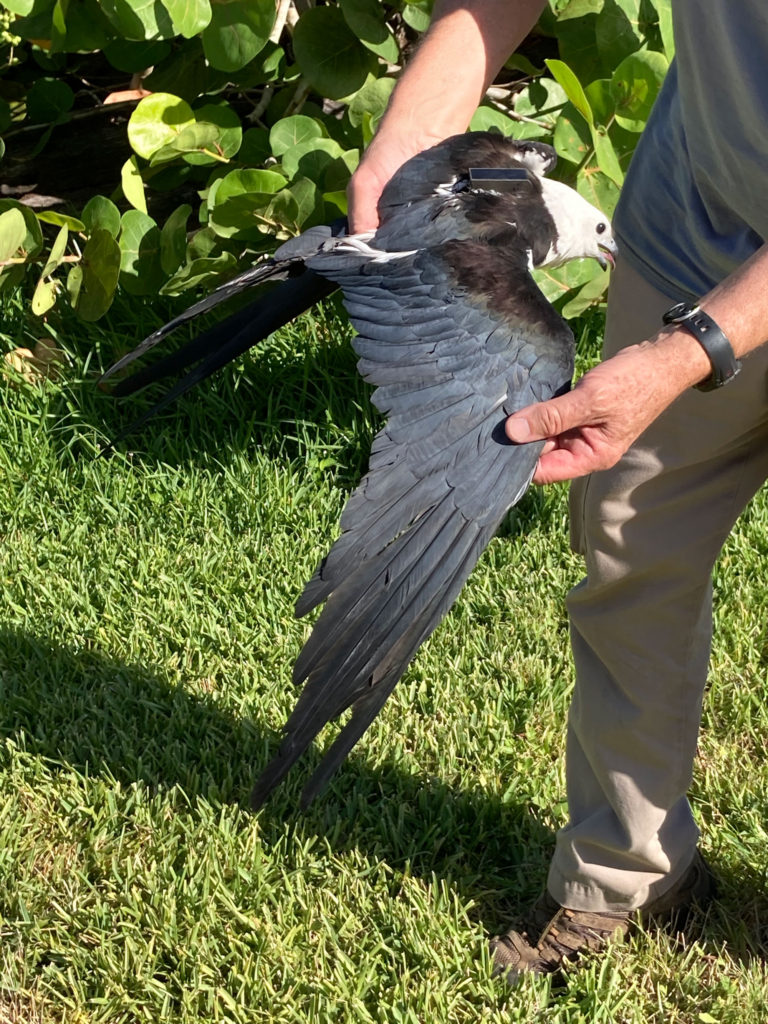ARCI has some exciting news to share! With the generosity of many wonderful partners on Sanibel Island, Florida, we were able to deploy GPS-equipped cell-phone transmitters on two breeding adult Swallow-tailed Kites. Our 2021 Sanibel GPS-tracked Kites are called “Bailey’s Homestead” and “Sanibel Botanical”. We are waiting for DNA results to see if our birds are male or female and should have answers in a few weeks.

With a recent interest in locating and monitoring nesting Swallow-tailed Kites, the City of Sanibel, the Sanibel-Captiva Conservation Foundation (SCCF), and the J.N. “Ding” Darling National Wildlife Refuge coordinated efforts with ARCI’s guidance on the use of Australian Pines for nesting. This has been a community-wide project with many local observations of kites and nest monitoring by dedicated volunteers across the Island. All professionals and volunteers who monitor the kites on Sanibel follow ethical viewing guidelines to ensure the safety and protection of the birds (minimize disturbance) and property owners (respect property rights).
As interest grew and the season progressed, a generous donation from a private donor enabled us to tag two adult Swallow-tailed Kites so we could expand our current knowledge of Swallow-tailed Kites on Sanibel and beyond.
In order to safely and successfully capture a Swallow-tailed Kite and fit it with a transmitter, we carefully use a trained, captive owl to lure kites into a large net. We were delighted to work with a local Sanibel conservation ambassador, “Mina” the Great Horned Owl (used for public education), and her caretaker, Breanna Frankel of C.R.O.W. (Clinic for the Rehabilitation of Wildlife, Inc.).

Why do we track Swallow-tailed Kites?
Based on ARCI experience since 1996 with remote tracking (using satellites and cell-phone networks to relay GPS fixes), we know that each tagged Swallow-tailed Kite will produce an enormous amount of highly accurate, time-stratified, and unbiased location data that can be used to address many of the most important questions about the species’ conservation biology, including:
- nesting locations
- home-range and core activity areas
- pre-migration communal roost sites
- seasonal movements
- migration corridors and habitats
- site fidelity
- exposure to potential natural and anthropogenic threats (e.g., severe weather, climate change, drought, habitat loss and degradation, contaminants)
This abundance of data and descriptive information informs science-based management and conservation policy for this spectacular species on Sanibel Island and beyond. In addition to the benefits to Swallow-tailed Kites, there is an umbrella effect for other species that use the same areas and habitats. As we have all come to learn, managing for Swallow-tailed Kites means we also are managing for healthy and enduring biodiversity.
Swallow-tailed kites like many birds of prey, often return to the same nesting sites year after year. The City of Sanibel protects all critical wildlife habitat including Swallow-tailed Kite nest trees. If you believe kites are nesting in your neighborhood on Sanibel, please report your sighting to the Department of Natural Resources at 239-472-3700 or contact Veronica.Runge@mysanibel.com.
ARCI is grateful to all the organizations, individuals, donors, and volunteers who made it possible to continue our long-term research to understand the ecology and conservation needs of Swallow-tailed Kites.

Thank you for this great information!
Sanibel is so fortunate to have the kites and the dedication to conservation of wildlife habitat!
I have a pair that I see in thonotossassa off of kelly lane right off 301 every year.
Saw one Lakeland Harden and Florida Avenue July 15
That is awesome. I must have a nest close to my home because I counted 5 in flight this year. The birds spent a period of time flying around my home for days. There are times I hear their sweet voice first before seeing them. I live in north Lakeland. I also see them at Colt Creek SP north of Lakeland.
I saw a pair flying in Crystal River Florida at the intersection of 7 Rivers Dr. and Venable.
Sadly, the Swallow Tailed Kite nest in an Australian Pine south of Periwinkle Park on Sanibel Island, which I was helping to monitor, was predated by crows the day after it hatched. As far as I know, no one even saw the hatchling(s), so we don’t even know how many chicks were in this brood.